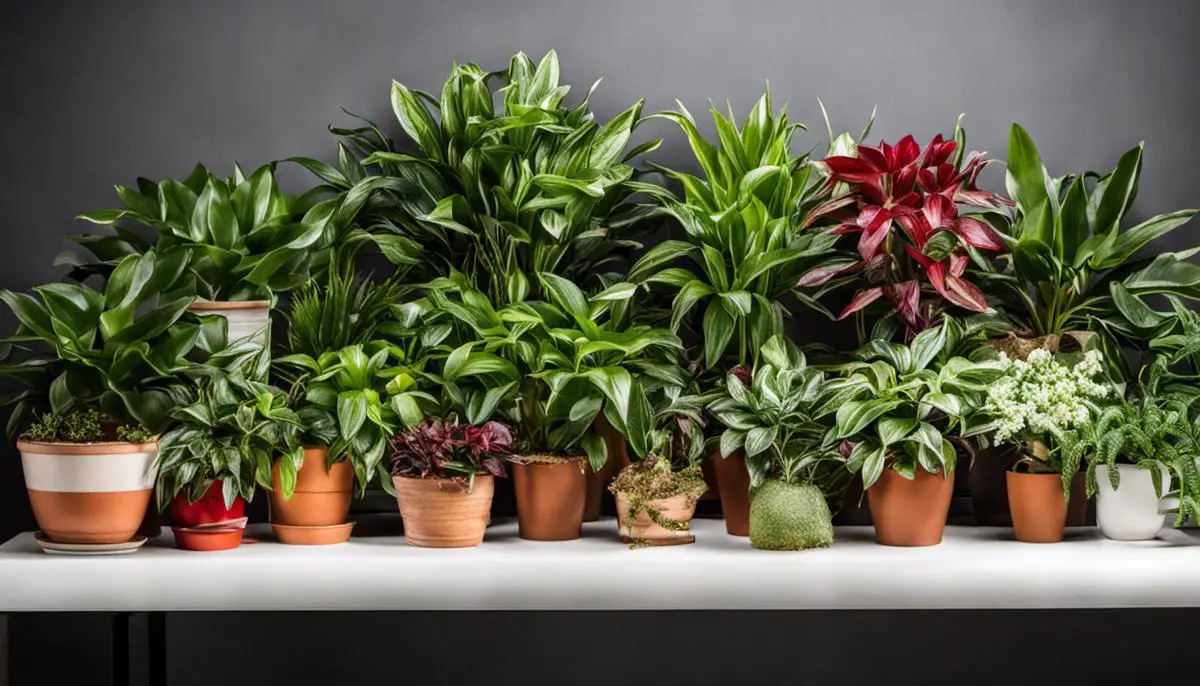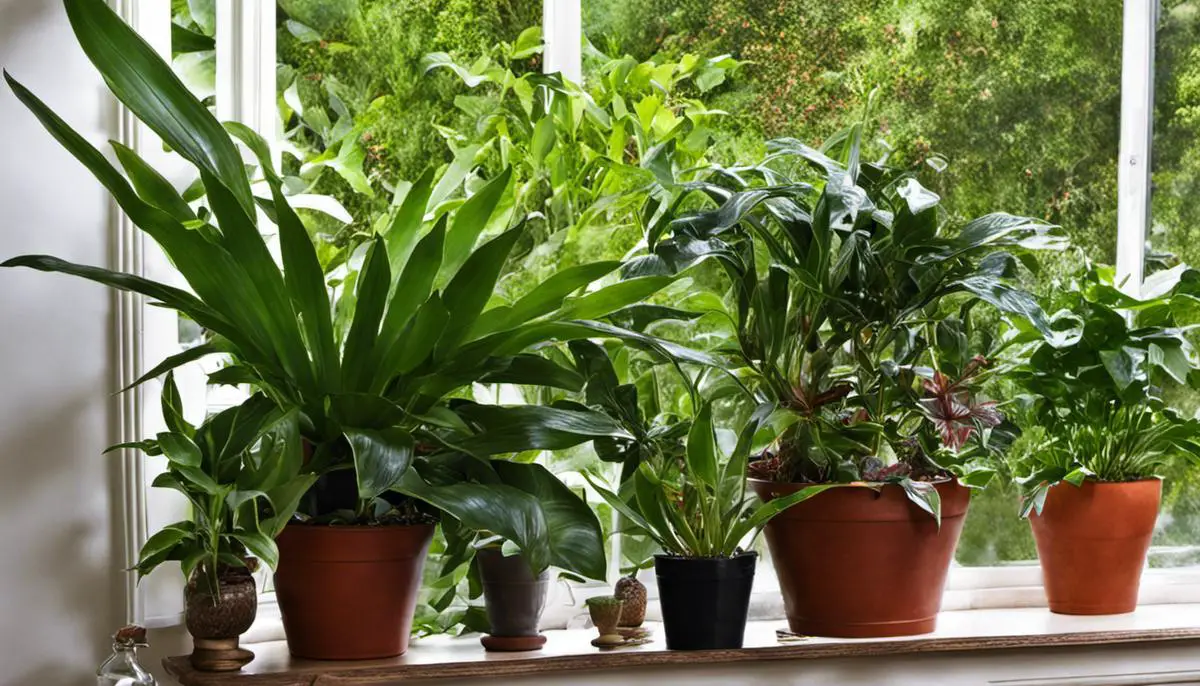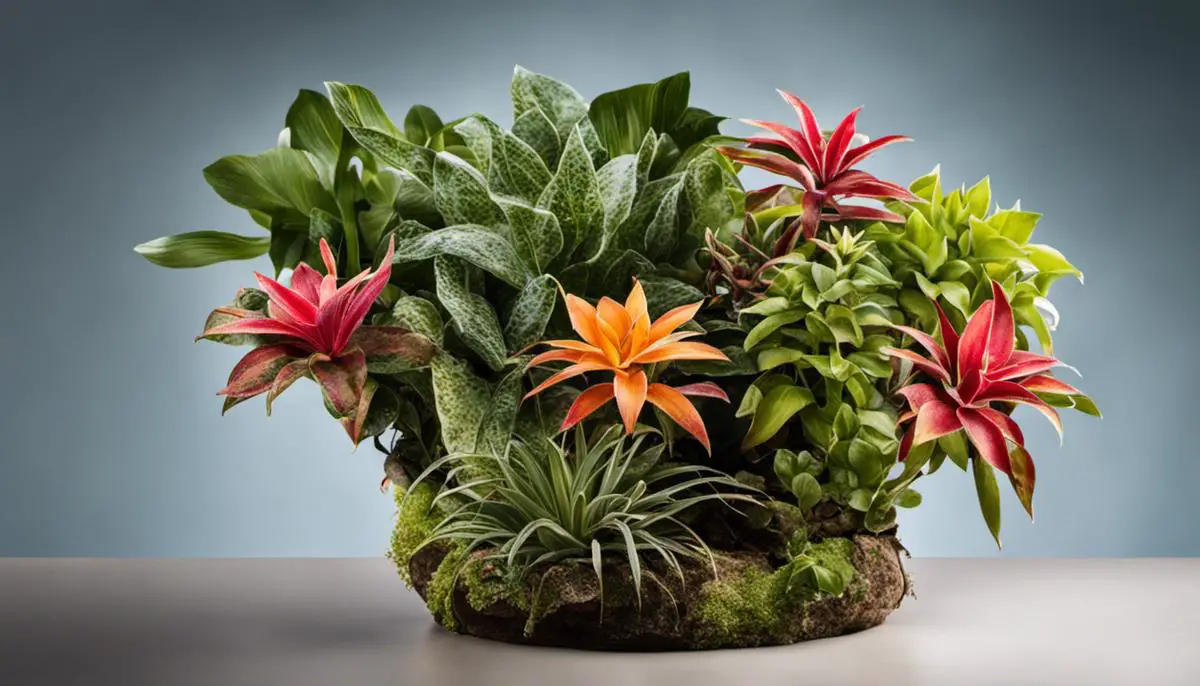Eco-friendly Houseplants: Growing Flora That Need Little Water
A verdant indoor jungle needs neither abundant water nor a green thumb. If you’re hesitant about delving into the world of houseplants due to a busy schedule or fear of accidentally overwatering, then low-water plants may be perfect for you. This discussion explores the attractive realm of houseplants that require minimal watering, showcasing their unique characteristics, their intriguing survival strategies, while deciphering the science that enables them to thrive on little liquid nourishment. Armed with this knowledge, we’ll further delve into a comprehensive guide on their appropriate care, dispelling myths and explaining integral aspects of their survival, such as lighting conditions, temperature ranges, and more. Lastly, this dialogue isn’t just about greenery; it’s about embracing a lifestyle. Through understanding these plants, you’ll appreciate their environmental importance and the tangible benefits they bring to your life.
Identifying Low-Water Houseplants
Identifying Low-Water Houseplants
Houseplants that require minimal watering come in various types, each with distinctive characteristics that make them capable of surviving with less water compared to other plants. From their unique structures to a variety of adaptations, these low-water houseplants have evolved over time to thrive in environments with limited water availability.
Examples of Low-Water Houseplants
Some popular examples of these houseplants include succulents like Aloe Vera and Jade plant, the Snake plant or Sansevieria, ZZ plants or Zanzibar Gems, and Air Plants or Tillandsias.
Succulents, for instance, are well-known for their ability to store water in their thick leaves, stems, and roots, hence their minimal watering needs. The Snake plant, renowned for its appealing and unique appearance, boasts of its robust root structure, allowing it to absorb and store more water. The ZZ plant, another robust species, has waxy, bulbous leaves for water storage. Lastly, air plants, which are part of the Bromeliad family, have evolved to absorb water and nutrients through their specialized leaves, instead of roots.
The Science Behind These Plants
Understanding the science behind the adaptations of these plants provides insights into how they survive with less water. The root structure, leaf composition, and photosynthetic process of these plants are specially adapted to operate under low moisture conditions.
Take for example the root structure. Many low-water houseplants have extensive root systems that span out to cover a larger area, enabling them to absorb as much water as possible. Some roots have a greater mass to maximize water absorption, while others like those in Cacti and other succulents, have evolved to store water in their root systems for prolonged periods.
The leaf composition of these plants also plays a crucial role. Plants like this have waxy, thick, or hairy leaves that are designed to reduce water loss due to transpiration – the process of water movement through a plant and its evaporation from aerial parts like leaves, stems, and flowers. These leaves may also contain stomata – small openings used for gas exchange – that can close during the heat of the day to prevent water loss.
Photosynthesis, an essential process for plants, is also affected by these adaptations. Many low-water plants use a specialized form of photosynthesis, known as Crassulacean Acid Metabolism or CAM, where the stomata in the leaves remain shut during the day to reduce evaporation and open at night to collect carbon dioxide. This process enables them to survive even in arid environments.
Mastering the Essentials of Houseplant Care
Developing a strong understanding of the key principles related to caring for low-water houseplants will optimize their overall health and growth. By replicating the same environments that these plants naturally grow in, not only will they survive on minimal quantities of water, but they’ll also enhance your indoor decor and be a straightforward, low-care choice for hobbyists.

Caring for Low-Water Houseplants
Learning the Necessities of Low-Water Houseplants
Low-water houseplants, often referred to as succulents or drought-tolerant plants, have their own unique set of requirements to flourish. These critical factors consist of specific lighting conditions, precise temperature ranges, fitting soil mixtures, proper pot selection, an effective watering plan, and maintaining an appropriate indoor humidity level.
Lighting Conditions for Low-Water Houseplants
These plants typically thrive in bright but indirect light. Too much direct sunlight can cause the leaves to scorch while limited light can hinder their growth. However, it’s important to note that some species can adapt to a variety of light conditions. A general rule is to place the plants near a north or east-facing window, but it may need to be adjusted depending on the specific plant species.
Temperature Requirements for Low-Water Houseplants
Temperature also plays a significant role in the health of low-water houseplants. Most prefer temperatures ranging from 60 to 80 degrees Fahrenheit during the day and about 10-15 degrees cooler at night. The temperature should never drop below 50 degrees Fahrenheit. If the indoor temperature goes above 80 degrees, make sure to provide adequate ventilation to prevent overheating.
Best Soil and Potting Methods for Low-Water Houseplants
When it comes to soil, well-draining is the way to go. Many horticultural stores sell pre-mixed cacti or succulent soil that is ideal for low-water houseplants. If you prefer to make your own mix, use equal parts potting soil, coarse sand, and perlite or pumice. As for pots, pick ones with good drainage holes to prevent waterlogging. Terra cotta pots are an excellent choice because they allow the soil to dry out more completely than plastic or glazed pots.
Watering Schedules for Low-Water Houseplants
Despite being resilient, these plants do need water but not as frequently as other houseplants. The best principle to follow is “less is more.” Overwatering is one of the most common mistakes—and often leads to root rot and plant death. Watering schedules vary, but once every two weeks is a reasonable starting point. Still, always let the top two inches of the soil dry out before the next watering.
Common Mistakes to Avoid
Overwatering, as touched on earlier, is a common mistake. Another is not providing enough light, leaving the plant to stretch in search of light, making it look long and thin. Misting is another common mistake that people make under the false belief that it increases humidity. Instead, use a humidifier or put the plant above a water-filled pebble tray to boost humidity.
Debunking Common Misconceptions
It’s a common misconception that low-water houseplants don’t need any care at all. While they require less maintenance than other plant types, they still need light, water, and appropriate temperatures. Another myth is that you can’t overwater these plants. Overwatering can lead to root rot, which is often deadly for these plants. It’s better to underwater than overwater.
Take Note
The information shared here is simply a general guide; it’s important to remember that each plant species has its own unique needs. Therefore, it is suggested that individuals conduct thorough research on the specific care instructions for their preferred houseplants.

Benefits of Low-Water Houseplants
Water Saving and Drought-Tolerant Houseplants
One major advantage of choosing drought-tolerant or low-water houseplants is their ability to significantly aid water conservation. Contrasting typical houseplants which may need hydration every day, these plant species can survive for several days or even weeks without water. This is particularly beneficial in environments where water is in short supply or difficult to access. By opting to care for houseplants that require minimal water, you are actively contributing to the preservation of this important resource.
Ideal for Arid and Hot Locations
Low-water houseplants are remarkably resilient and can thrive in arid conditions. These desert natives are specifically adapted to endure long periods of drought and high temperatures. Some low-water houseplants like cacti, succulents, snake plants, ZZ plants, and air plants are perfect for indoor environments with less humidity and more temperature fluctuations.
Reducing Household Water Consumption
Incorporating low-water houseplants into your indoor garden is a great strategy to reduce your household’s overall water consumption. Maintaining a garden looking fresh and lush often requires a large amount of water. However, with low-water houseplants, your indoor garden stays green without any excessive water use. This not only conserves water but also saves you time and effort in plant care.
Aesthetic Appeal and Versatility
Even though they require less water, these types of plants do not compromise on aesthetic appeal. They come in various shapes, sizes, and colors that can brighten up any room. The unique textures and forms of low-water houseplants like Aloe Vera, Jade Plant, or Ponytail Palm can significantly enhance your home decor. They are also highly versatile and can adapt well to various styles from contemporary to bohemian.
Stress Relief and Wellness
Houseplants’ psychological benefits are often overlooked. Low-water houseplants are proven to be effective stress relievers. Their presence creates a calming environment that helps decrease anxiety and promote focus and productivity. Low-water houseplants are a fantastic option for those wanting indoor plants without committing to a high-maintenance care routine, thus significantly reducing plant-related stress and allowing more enjoyment of the plant’s visual and mental wellness benefits.
Air Purification
In addition to their aesthetic benefits and wellness perks, many low-water houseplants also possess air purifying abilities. Studies have shown that plants such as the Snake Plant and ZZ plant, both low-water species, can filter certain toxins from the air, thereby improving indoor air quality. As a result, maintaining such houseplants offers health advantages, enhancing the overall living environment in a home.

Indeed, low-water houseplants are more than just a décor fluke or a botanist’s novelty. They’re a testament to nature’s adaptability, a boon for conservation, a balm for the stressed soul, and a welcome misfit in an over-hydrated plant world. These low-maintenance companions stand as silent, resilient reminders of life’s inherent need for balance, embodying resilience in the face of adversity. As we integrate them into our living spaces, they foster healthful, sustainable habits while gracing our interiors with their unique aesthetic charm. So venture forth and nurture these drought-loving houseplants. Not only will they thank you with their enduring beauty, but they’ll also reward you with a newfound appreciation for nature’s ingenuity and our own capacity for responsible stewardship.



